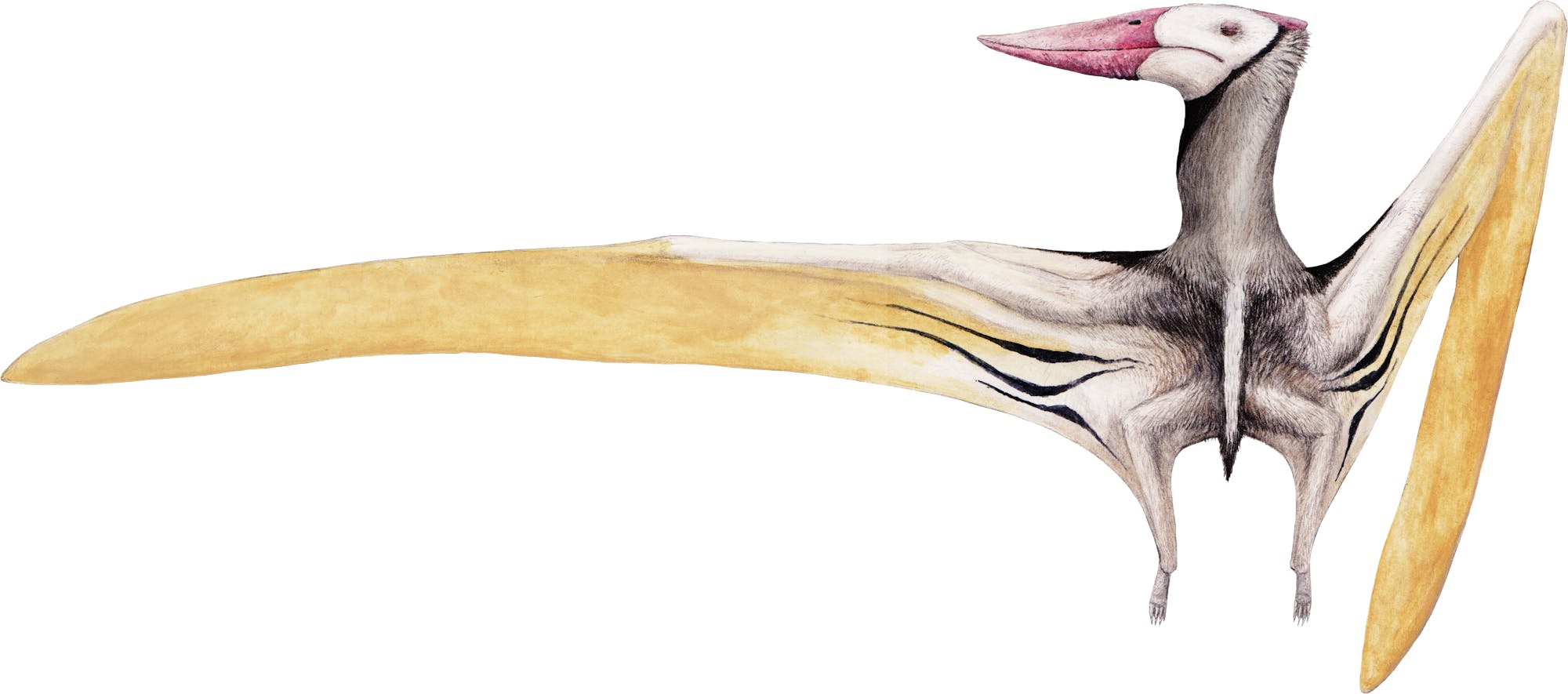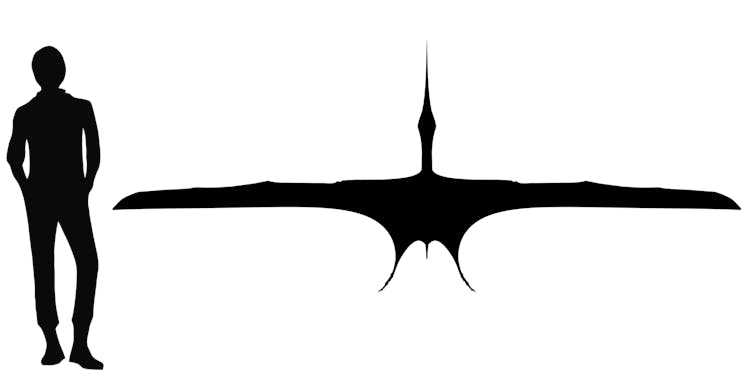


Despite having many exposures of Mesozoic-aged rocks, Mexico has very few known pterosaur specimens. The most complete pterosaur from Mexico is the only known specimen of Muzquizopteryx coahuilensis. Muzquizopteryx is known from the El Rosario Quarry in the Muzquiz Limestone, deposited during the Late Cretaceous, approximately 90 million years ago. Muzquizopteryx coahuilensis is named for the Muzquiz Limestone, and the northeastern Mexican state of Coahuila. After the specimen was discovered, it was displayed in the office of a mine manager for some time before it came to the attention of paleontologists. The specimen is now part of the Colección Nacional de Paleontología, Universidad Nacional Autónoma de México in Mexico City.
The specimen is preserved on two limestone slabs and is made up of the majority of the skull, the trunk and hip vertebrae, the shoulders and sternum, most of both arms, the hips, and most of the legs, as well as imperfectly preserved tendons from the wings. Although the skull is missing the tips of the jaws, it is still quite informative. Overall the shape is long and narrow, with completely toothless jaws. At the rear of the skull is a small backwards-pointing crest similar to, but much smaller than Pteranodon longiceps. The bones of both wings are partially preserved, with both wings missing most of the wing fingers. Amazingly, the specimen shows that Muzquizopteryx, unlike almost all pterosaurs except for Nyctosaurus, may have lost manual digits I-III. Despite the incomplete nature of the wings, enough of the specimen is present to estimate a wingspan of about two meters (6.5 feet).
The specimen preserves traces of the powerful tendons associated with the wings. In addition to tendons on the front and rear edges of the wings that moved the enormous wing finger and controlled the wing's shape, the specimen preserves tendons that appear to show a connection from the elbow to the torso. It's not clear what that tendon was used for, but it may have been for the triceps or may have been used to create tension within the wing.
Comparison of Muzquizopteryx to other pteroaurs indicates that it is a nyctosaurid, most closely related to Nyctosaurus which lived about five million years later in the central United States. Nyctosaurids are toothless fish-eating pterosaurs. They have distinctive humeri, with large, rectangular deltopectoral crests making each humerus look like a hatchet. The deltopectoral crest is a ridge arising from the front edge of the humerus that increases the attachment area for the enormous deltoid and pectoral muscles of flying animals. Finally, as hinted at earlier, nyctosaurids appear to have lost digits I-III from the hands.
Nyctosaurids are part of a large group of mostly ocean-going fish-eating pterosaurs known as ornithocheiroids. Ornithocheiroids include the nyctosaurids, as well as pteranodontids, ornithocheirids, boreopterids, and istiodactylids. Nyctosaurids have traditionally been allied with pteranodontids, also crested and toothless pterosaurs from the Late Cretaceous of the United States, but more recent phylogenetic analyses indicate that they may be the most basal members of the clade.
